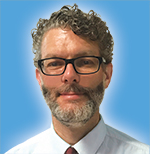Material Concerns in a Complex Design World
The use of more composite materials, the emergence of generative design approaches, new simulation tools and the adoption of various additive manufacturing (AM) solutions are playing a role in increasing this complexity.
Latest News
October 1, 2019
A number of trends are increasing the complexity of design: lightweighting requirements, compliance mandates, the proliferation of new wireless technologies, the adoption of Internet of Things (IoT) strategies, the use of 3D printing for production parts and many, many others.

Materials selection has also become more complex, and is significantly affecting a number of other design trends that we follow closely here at Digital Engineering. The use of more composite materials, the emergence of generative design approaches, new simulation tools and the adoption of various types of additive manufacturing (AM) solutions are playing a role in both increasing this complexity and helping engineers overcome those challenges.
AM applications in particular present some unique challenges when it comes to materials performance and simulation. There are new materials emerging for use with different 3D printers, and in many cases these materials either lack sufficient performance data to feed into simulation engines, or the data may be proprietary. In addition, even traditional materials don’t perform in quite the same way when utilized in AM processes that alter their properties during production. Further complicating matters is the fact that different AM machines and processes may produce varying results with the same materials. In some cases, build quality can vary among identical machines, or even vary from job to job on the same machine.
Simulation tools are emerging to help engineers sort through this new set of design challenges. In this issue, our senior editor Kenneth Wong takes a deep dive into composite design and simulation. We also take a look at the use of new designer materials for 3D printing applications, and how tools are emerging that allow designers to model these materials at a variety of levels. There’s also an update on additional new AM materials, and how simulation software providers are coping with some of the inherent inconsistencies that come along with additive manufacturing processes.
We’re also featuring coverage of two projects that leverage many of those approaches and technologies. NASA and MIT are leveraging new “metamaterials” to create wing designs that can dynamically adjust to improve performance during flight, and Volkswagen has implemented generative design approaches for some elements of its new VW Type 20 concept minivan.
Introducing the CAASE19 Virtual Conference
On Oct. 8, Digital Engineering and NAFEMS Americas jointly launched our first virtual Conference on Advancing Analysis & Simulation in Engineering (CAASE19). In 2018, DE and NAFEMS partnered on the first highly successful CAASE event in Cleveland. This virtual event will help continue our efforts to educate the market in the latest simulation and analysis trends while we prepare for the next in-person event in Indianapolis next summer.
We here at DE are excited about the keynote presentation from Elyse Fosse of NASA’s Jet Propulsion Laboratory, who is to discuss the complexities of managing data related to the Mars 2020 project using model-based systems engineering techniques. Ford is also on hand to discuss the role of simulation and gaming technology in development of its autonomous vehicles, while aviation company Embraer is covering the use of simulation process and data management in its operations. Procter & Gamble is leading a session that discusses how to expand the use of simulation activities across an organization.
There is also a session (led by Ryobi Die Casting’s Joshua Huang) on the topic of “Additive Manufacturing and/for Die Casting Manufacturing.” The session is examining the potential for AM technology to supplant traditional die casting in some applications, and where the technology could augment or improve existing processes to boost casting quality and productivity, while reducing costs.
You can learn more about it by reading our conference preview on page 8, or by clicking here.
More NAFEMS Coverage
Subscribe to our FREE magazine, FREE email newsletters or both!
Latest News
About the Author
Brian Albright is the editorial director of Digital Engineering. Contact him at [email protected].
Follow DE





